You'll find that choosing the right microscope slides for 3D imaging can greatly impact your research quality and results. While standard slides might suffice for basic observations, specialized options offer enhanced clarity and depth perception that's essential for detailed analysis. Whether you're examining living specimens or complex tissue structures, the market offers various premium slides designed specifically for three-dimensional visualization. Let's explore the top recommendations from experienced lab professionals.
Microscope Slides with Specimens for Kids (60 Tablets)
This 60-piece microscope slide set serves as an ideal starter kit for young science enthusiasts, featuring 30 prepared specimens that range from plant cells to insect parts. You'll find well-preserved samples of plants, algae, mammalian tissues, and more, all securely mounted on standard 25mm x 75mm glass slides with rounded edges for safety.
While you'll need parental supervision due to the glass components, the slides come clearly labeled and protected in a sturdy case. Though some specimens may require a powerful microscope to view fine details, and occasional slides might need cleaning, this set effectively sparks scientific curiosity and supports hands-on learning for children and early teens.
Best For: Young science enthusiasts and students aged 8-15 who are interested in biology and microscopy, particularly when supervised by parents or teachers.
Pros:
- Comprehensive set of 30 well-preserved and labeled specimens covering diverse biological samples
- Slides feature rounded edges for enhanced safety and come in a sturdy protective case
- Excellent educational tool that encourages hands-on scientific exploration and discovery
Cons:
- Glass slides require careful handling and adult supervision for safety
- Some specimens may be too small to view clearly without a high-powered microscope
- Individual slides may need cleaning before use and quantity may differ from product images
Prepared Microscope Slides with Specimens (100 Pack)
Aspiring young scientists and students aged 8-13 will find these 100 prepared microscope slides an ideal introduction to the microscopic world. The high-quality glass slides feature diverse specimens, including human tissues, insects, and plant parts, with excellent light transmission for clear viewing.
You'll appreciate the thoughtful safety features, including polished round edges and robust protection with a sponge-lined plastic case. Each slide measures 1×3 inches and comes clearly labeled for easy identification. While some specimens are small, they're clear enough for educational purposes. It's a practical tool for homeschool science classes, though you might want to inquire about the ethical sourcing of human tissue samples.
Best For: Students aged 8-13, homeschool educators, and science enthusiasts looking for an introductory microscope slide set for educational purposes.
Pros:
- High-quality glass slides with excellent light transmission and clear specimen visibility
- Comprehensive protection with sponge-lined case and polished round edges for safety
- Wide variety of specimens including human tissues, insects, and plant parts with clear labeling
Cons:
- Some specimens are notably small, which might affect viewing quality
- Questions about ethical sourcing of human tissue samples need clarification
- Limited specimen variety compared to professional sets, missing some important examples like mitosis stages
Microscope Slides and Coverslips Set (50 Slides, 100 Coverslips)
Laboratory professionals and students alike will appreciate this extensive set of 50 ultra-clear glass microscope slides and 100 coverslips. You'll find these slides feature ground edges and 45-degree clipped corners, making them safer to handle while reducing the risk of cuts.
The slides measure 1 in x 3 in, with coverslips at 0.86 in x 0.86 in, working seamlessly with all microscope types. They're pre-cleaned and highly transparent, ensuring excellent optical performance for your specimens. If you're concerned about quality, there's a warranty for any issues upon arrival, though you'll find these slides consistently deliver reliable results for both research and educational purposes.
Best For: Laboratory professionals, students, educators, and science enthusiasts seeking high-quality microscope slides and coverslips for specimen observation and analysis.
Pros:
- Premium quality glass slides with safety features like ground edges and clipped corners
- Compatible with all microscope types and pre-cleaned for immediate use
- Comprehensive set with 50 slides and 100 coverslips provides excellent value
Cons:
- Some concerns reported about coverslip packaging
- Limited quantity may require frequent reordering for heavy users
- No storage case mentioned for organizing slides and coverslips
United Scientific Glass Microscope Slides (Pack of 72)
Professional microscopists and research facilities will find exceptional value in United Scientific's 72-pack of pre-cleaned glass slides. These slides, measuring 75mm x 25mm with a thickness of 1.0-1.2mm, feature ground edges and are made from high-quality sheet glass.
You'll appreciate the double protection of vacuum packaging and bubble bags, ensuring your slides arrive undamaged. The slides are compatible with all microscope types and excel in various applications, particularly blood smears. While covers aren't included, you're getting a cost-effective solution for frequent lab work. The optical glass construction delivers the clarity and durability you need for precise 3D imaging tasks.
Best For: Professional laboratories, research facilities, and educational institutions requiring high-quality microscope slides for frequent use and precise imaging tasks.
Pros:
- Double protection packaging ensures slides arrive safely and in pristine condition
- Universal compatibility with all microscope types (monocular, binocular, and trinocular)
- Cost-effective bulk packaging of 72 slides makes it economical for frequent users
Cons:
- Slide covers not included, which may cause project delays if not anticipated
- Limited thickness range (1.0-1.2mm) may not suit all specialized applications
- Pre-cleaned slides may still need additional cleaning before sensitive applications
E35.3501 Blank Microscope Slides & 100-Pieces Square Cover Glass, Glass
Researchers and hobbyists seeking reliable microscopy equipment will find exceptional value in the E35.3501 package, which includes 72 pre-cleaned blank slides and 100 square cover slips.
You'll appreciate the optical glass construction with ground edges, featuring slides measuring 1 x 3 x 0.04 inches and cover slips at 22mm x 22mm. The slides come with protective paper separators to prevent damage, and they're sturdy enough for professional lab work.
Whether you're preserving snowflakes, conducting biology lessons, or working on miniature projects, these slides deliver clear imaging results. While some users reported damaged packaging, the slides themselves maintain their quality, making them a cost-effective choice for your microscopy needs.
Best For: Students, educators, researchers, and hobbyists seeking high-quality microscope slides and cover slips for educational or scientific projects at an affordable price.
Pros:
- Excellent value with 72 pre-cleaned slides and 100 cover slips in one package
- High-quality optical glass construction with ground edges for professional-grade clarity
- Includes protective paper separators between slides to prevent damage and chipping
Cons:
- Some customers reported receiving damaged packaging
- One instance of cracked slide reported in customer feedback
- Limited size options available (only one standard size for slides and cover slips)
AmScope B120C LED Binocular Compound Microscope
With an impressive magnification range of 40X to 2500X, the AmScope B120C LED Binocular Compound Microscope stands out as a versatile choice for both students and professionals. You'll appreciate its Siedentopf binocular head, which rotates 360 degrees and adjusts to your interpupillary distance for comfortable viewing.
The microscope's high-quality optics include DIN achromatic objectives and a 1.25 NA Abbe condenser with iris diaphragm. Its mechanical stage offers precise X-Y control, while coaxial focus knobs guarantee smooth adjustments. Built with durable, corrosion-resistant cast steel, it's ready for demanding lab work in biology, engineering, and medical research.
Best For: Students, educators, and professionals in biological sciences, medical labs, and research facilities seeking a high-quality compound microscope with advanced features and excellent optical performance.
Pros:
- Impressive magnification range (40X-2500X) with professional-grade optics
- Ergonomic design with 360-degree rotating head and adjustable interpupillary distance
- Durable construction with corrosion-resistant cast steel frame and precise mechanical controls
Cons:
- May be overly complex for beginners or casual users
- Higher price point compared to basic student microscopes
- Requires proper maintenance and care, including oil immersion for highest magnification
30 Prepared Microscope Slides with Specimens for Kids & Adults
Discovering the microscopic world becomes accessible and engaging with this extensive set of 30 prepared slides, perfect for budding scientists and curious minds alike. You'll find a diverse collection of specimens, from bacteria and fungi to plant organs and insect parts, all clearly labeled on standard 1×3-inch glass slides.
While these slides excel at lower magnifications and deliver solid educational value, they're best suited for introductory exploration rather than advanced research. The thick-walled plastic container guarantees safe storage, though you might notice some clarity limitations at magnifications above 600X. For serious high-power viewing, consider upgrading to the C & A Scientific PS02 alternative.
Best For: Students, hobbyists, and families seeking an introduction to microscopy through a diverse collection of well-labeled specimen slides suitable for basic educational exploration.
Pros:
- Comprehensive variety of specimens covering bacteria, fungi, plant organs, and insect parts
- Well-organized storage in a sturdy plastic container with clear labeling on each slide
- Excellent educational value for engaging children and beginners in scientific discovery
Cons:
- Limited clarity at higher magnifications (600X and above)
- Thicker cover glass may affect viewing quality at maximum magnification
- Not suitable for advanced research or professional-level microscopy work
60 Prepared Microscope Slides for Kids and Biology Classes
Prepared microscope slides serve as an essential gateway for young scientists aged 8-12 to explore the microscopic world safely and effectively. You'll find this 60-slide set features high-definition optical glass with specimens ranging from bacteria to insect parts, all clearly labeled for easy identification.
The slides' sturdy construction and polished edges guarantee your child's safety, while the double-layer bubble film packaging protects against breakage. You'll appreciate the clean staining and superior resolution compared to typical school supplies, making microscopic structures easily visible. Though some specimens may require basic microbiology knowledge, these slides effectively support biology education and scientific curiosity.
Best For: Students ages 8-12, science teachers, and homeschooling parents looking for a comprehensive introduction to microscopic study with ready-to-use, clearly labeled specimens.
Pros:
- High-quality optical glass slides with polished edges for safe handling and clear visibility
- Wide variety of specimens including bacteria, plant organs, and insect parts with labeled identification
- Sturdy protective packaging with double-layer bubble film to prevent damage during shipping
Cons:
- Some specimens may be too advanced for younger children without basic microbiology knowledge
- Limited to 60 slides compared to larger sets available in the market
- Minor imperfections may be present in some specimen preparations
Microscope Slides Concave, Single Depression Glass Slides (50pcs)
Professional microscopists and biology students will find these concave single depression glass slides indispensable for examining wet specimens and single-celled organisms. Each pack includes 50 premium optical glass slides measuring 25.4 x 76.2 x 1.2 mm, with a 16mm diameter depression that's 0.5mm deep.
You'll appreciate the high transparency achieved through special glass treatment and the safety-focused ground edges. While they're pre-cleaned and reusable, you might encounter occasional visibility issues with deeper specimens. The slides' sturdy construction resists breakage, though some users report receiving marred or dirty pieces. Despite minor quality concerns, they're competitively priced and effective for educational applications.
Best For: Biology students, educators, and laboratory professionals who need to examine wet specimens and single-celled organisms under a microscope.
Pros:
- High-quality optical glass with excellent transparency for clear specimen viewing
- Convenient 16mm depression well eliminates need for cover slips
- Durable construction with safety-oriented ground edges for handling
Cons:
- Some slides may arrive dirty or marred, affecting viewing quality
- Visibility issues can occur with deeper specimens
- Inconsistent packaging protection leading to potential breakage during shipping
50 Pieces Microscope Slides and Cover Slips Set
Science enthusiasts and students will find this 50-piece microscope slides and cover slips set essential for their microscopy needs. You'll get 50 microscope slides (7.6cm x 2.5cm) and 100 cover glasses (2cm x 2cm), all crafted from high-quality optical glass.
The set's versatility makes it perfect for examining biological specimens, from plant cells to insect parts. You'll appreciate the slides' smooth edges and clear visibility under any optical microscope. While the price point offers excellent value, you might want to clean the slides before use. Keep in mind that some users report challenges with the cover slip packaging, so careful handling is recommended.
Best For: Students, educators, and amateur microscopists looking for an affordable, basic set of microscope slides and cover slips for biological specimen examination.
Pros:
- Comprehensive set with 50 slides and 100 cover slips at a competitive price point
- Made from optical glass providing clear visibility for specimen viewing
- Versatile application for various biological samples with smooth, safe edges
Cons:
- Cover slips may be difficult to handle due to packaging issues
- Some slides might require cleaning before first use
- Inconsistent quality reported by some users
Factors to Consider When Choosing Specialized Microscope Slides for 3D Imaging
When selecting specialized microscope slides for 3D imaging, you'll need to evaluate significant factors like slide material transparency and specimen depth requirements to guarantee peak visualization of your samples. You should consider surface treatment options that enhance specimen adhesion while maintaining optical clarity, along with edge designs that prevent mounting media leakage and facilitate proper coverslip placement. The mounting media's compatibility with your chosen slide is also vital, as it affects both image quality and long-term sample preservation.
Slide Material and Transparency
Since image quality in 3D microscopy depends heavily on light transmission, choosing the right slide material and transparency is essential for successful visualization. You'll want to select slides made from high-quality optical glass that's free from impurities, as these guarantee maximum light transmission and minimal distortion of your specimens.
When evaluating slides, pay attention to their thickness. Thinner slides are often better for 3D imaging because they reduce the amount of glass that light must pass through, resulting in clearer images. Look for slides with smooth, polished edges to minimize light scattering and enhance your viewing experience. Don't forget to keep your slides meticulously clean, as any smudges or residues can interfere with image quality and compromise your 3D microscopy results.
Specimen Depth Requirements
The correct specimen depth plays a central role in achieving high-quality 3D microscope images. When you're selecting specialized slides, you'll need to match your specimen thickness to your microscope's capabilities. Standard compound microscopes work best with specimens up to 1-2 mm thick, while thinner sections under 10 microns are ideal for high-resolution imaging.
For thicker samples, you'll want to choose slides that accommodate specialized techniques like confocal microscopy, which can capture clear images through multiple focal planes. Consider your specimen's refractive index and transparency when determining suitable depth. If you're working with dense or opaque materials, you'll need to prepare thinner sections to guarantee proper light transmission. The right specimen depth guarantees you'll capture sharp, detailed 3D images without distortion.
Surface Treatment Options
Selecting appropriate surface treatments for microscope slides can make or break your 3D imaging results. You'll want to contemplate anti-reflective coatings that considerably reduce glare and enhance light transmission, leading to sharper, more detailed 3D images.
When choosing your surface treatment, pay attention to the slide's hydrophilic or hydrophobic properties. Silanization and passivation treatments can alter these characteristics, directly affecting how your specimens adhere to the surface. You'll need to match these properties to your specific imaging technique and specimen type.
Don't overlook protective coatings – they're essential for maintaining specimen integrity during extended imaging sessions. These specialized treatments won't just protect your samples; they'll also minimize background noise and improve contrast, giving you the ideal conditions for high-quality 3D visualization.
Edge Design Impact
Understanding edge design features can dramatically influence both safety and imaging quality when working with specialized microscope slides. When you're selecting slides for 3D imaging, you'll want to prioritize those with polished or ground edges to reduce the risk of cuts during handling. Look for slides with rounded or clipped corners, as they'll make your specimen manipulation smoother and more efficient.
The edge design you choose will affect how well your coverslips align and whether you'll encounter air bubbles that can compromise your 3D imaging results. Pay attention to edge thickness too – thinner edges typically provide better light transmission and higher resolution in your final images. You'll also need to take into account how the edge design works with your preferred mounting techniques for ideal specimen preparation.
Mounting Media Compatibility
Proper mounting media compatibility plays an essential role in achieving high-quality 3D microscope imaging results. When you're selecting slides, you'll need to verify that your mounting medium's refractive index matches your slide material to prevent light distortion and maintain peak clarity.
You'll want to check that your mounting media's viscosity suits your specimen type, preventing unwanted movement during imaging while preserving structural integrity. It's vital to choose chemically inert mounting solutions that won't react with your specimens or slides, as reactions can compromise both imaging quality and sample preservation.
Consider your specific imaging technique – whether you're using fluorescence, phase contrast, or differential interference contrast – as each method requires mounting media with particular optical properties for the best results. This compatibility will directly impact your imaging success.
Storage Life Considerations
When considering specialized microscope slides for 3D imaging, storage life factors greatly impact your long-term research success. You'll need to evaluate your specimen type carefully, as biological samples require extra attention to prevent degradation and contamination. While glass slides can last indefinitely, your specimens demand specific preservation methods.
To maximize your slides' longevity, you'll want to maintain controlled temperature and humidity conditions in your storage area. Select high-quality mounting media that's compatible with your 3D imaging requirements and supports specimen stability. Don't forget to implement a regular inspection schedule to catch early signs of deterioration, such as discoloration or contamination. By addressing these storage considerations upfront, you'll protect your valuable specimens and guarantee consistent imaging quality throughout your research timeline.
Cost Vs Quality Balance
Balancing cost against quality presents a significant decision point in selecting specialized microscope slides for 3D imaging. While you'll find budget-friendly options available, it's important to understand that lower-priced slides can compromise your imaging results through reduced clarity and potential distortions.
Consider investing in higher-quality slides made from optical glass, as they'll provide superior resolution and clearer 3D images. You'll likely save time and resources in the long run by avoiding repeat imaging sessions caused by poor visibility. When evaluating your options, look for essential features like rounded edges and proper labeling, especially if you're working in an educational setting.
Don't automatically opt for the cheapest slides available. Instead, assess your specific imaging needs and choose slides that offer the best balance between cost and performance for your requirements.
Magnification Range Support
Since achieving accurate 3D imaging relies heavily on magnification capabilities, you'll need slides that support a broad range from 40X to 2500X. This extensive range guarantees you can capture both overall structural details and intricate cellular components essential for thorough 3D analysis.
When selecting your slides, prioritize those made from high-definition optical glass, as they'll provide superior resolution across all magnification levels. You'll want to check that your slides maintain clarity and minimize distortion, even at the highest magnifications. This is particularly important for focus stacking techniques commonly used in 3D microscopy.
Remember to verify compatibility with your specific 3D imaging microscope, as different systems may require particular slide specifications to deliver ideal results and maintain image quality throughout the magnification range.
Frequently Asked Questions
How Long Can Prepared Microscope Slides Be Stored Before Specimens Deteriorate?
You'll find properly prepared and sealed microscope slides can last 5-10 years if stored in a cool, dark place. However, you should check them periodically, as some specimens may fade or deteriorate sooner.
Can Specialized 3D Imaging Slides Be Reused After Cleaning?
You shouldn't reuse specialized 3D imaging slides, as cleaning can damage their precise optical properties and surface treatments. It's best to use fresh slides to maintain image quality and experimental accuracy.
What Temperature Conditions Are Optimal for Storing Microscope Slides?
You'll want to store your microscope slides at room temperature (20-25°C) in a dry, dark place. Don't expose them to extreme temperatures or humidity. Use slide boxes or cabinets for best preservation.
Are There Specific Cleaning Solutions Recommended for 3D Imaging Slides?
You'll want to use optical-grade lens cleaners or methanol-based solutions for 3D slides. Don't use harsh detergents. For daily cleaning, a mixture of distilled water and 70% isopropyl alcohol works effectively.
How Does Slide Thickness Affect the Quality of 3D Microscope Imaging?
You'll find that slide thickness directly impacts your 3D imaging quality. If it's too thick, you'll lose resolution and clarity. Thinner slides allow better light transmission and improved focus throughout different layers.
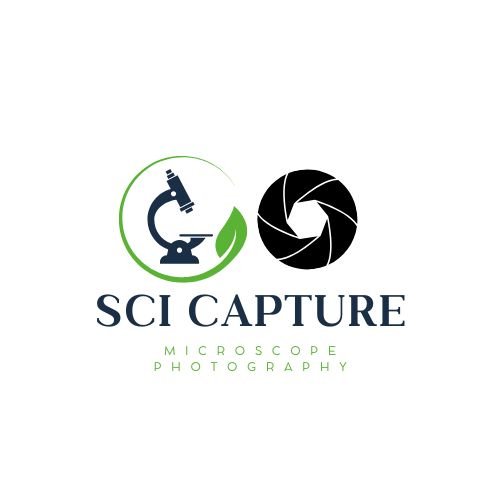
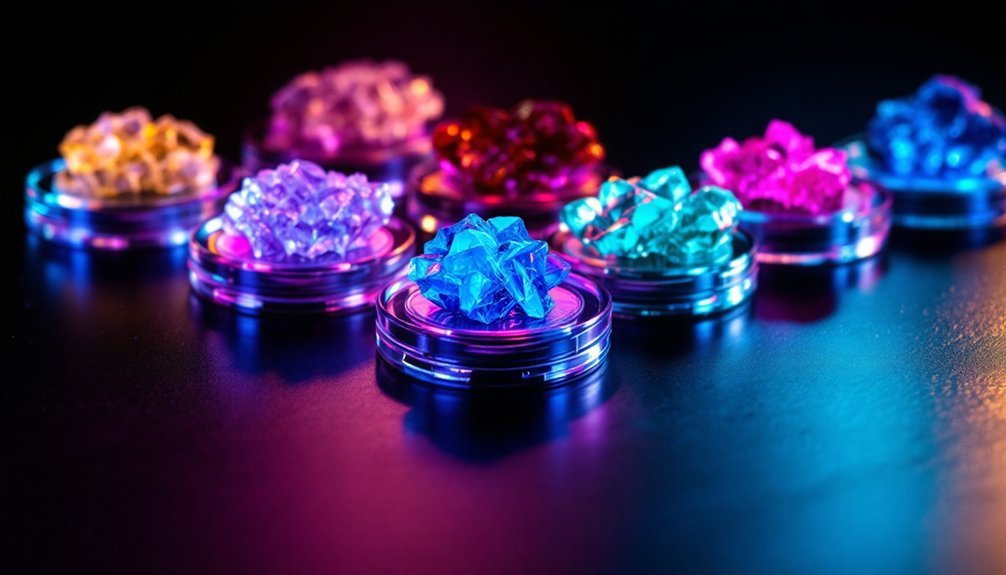
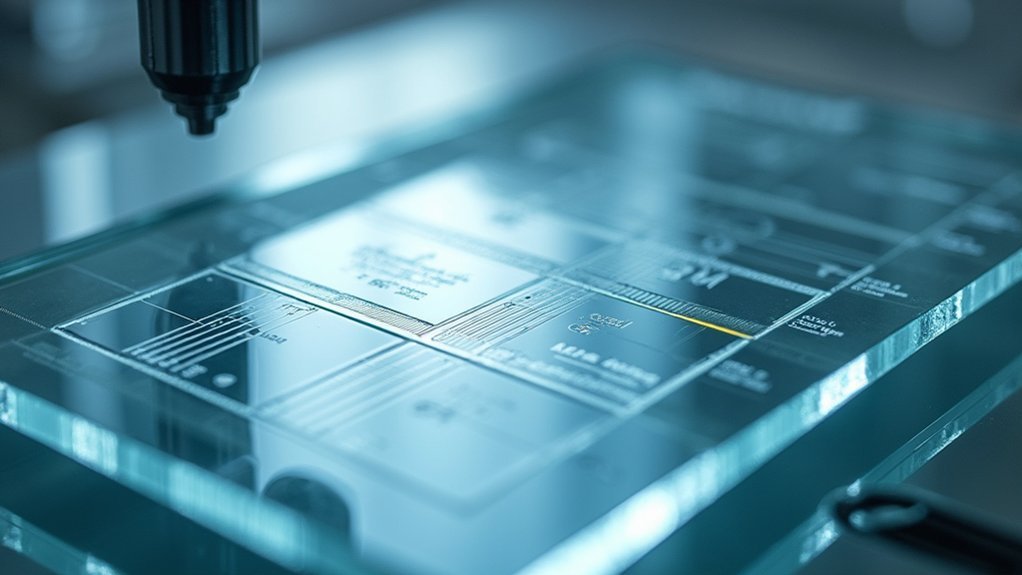
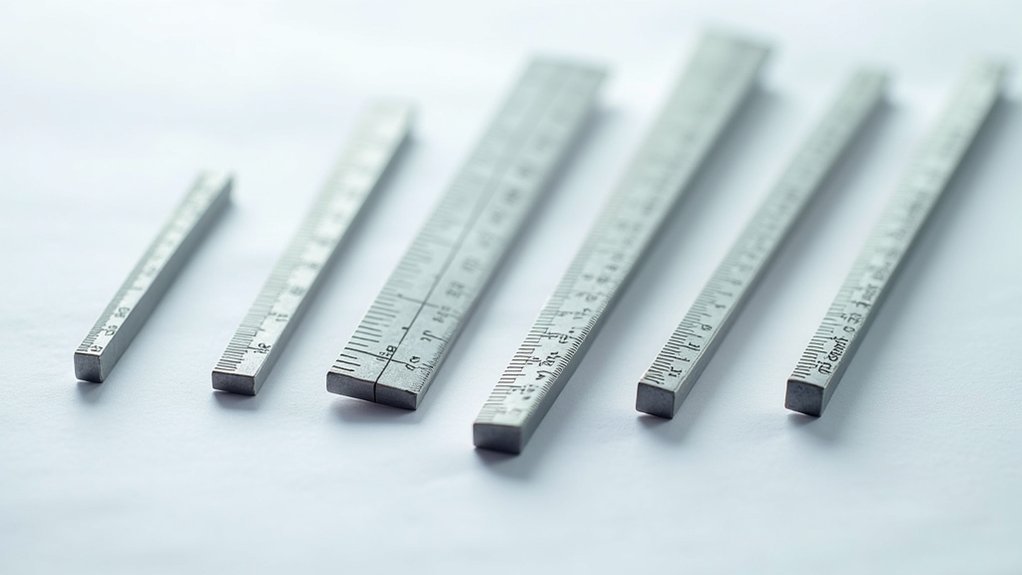
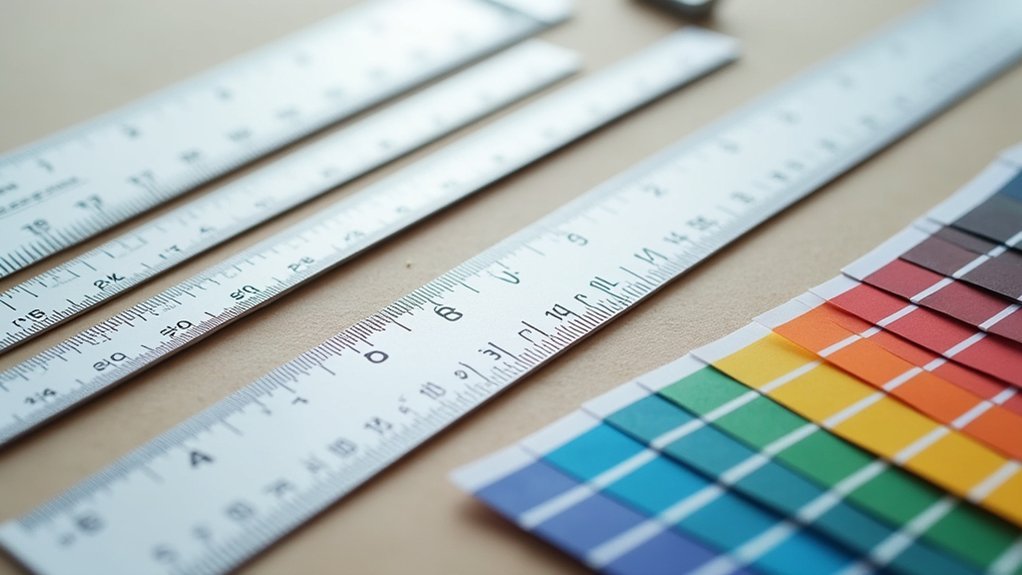
Leave a Reply